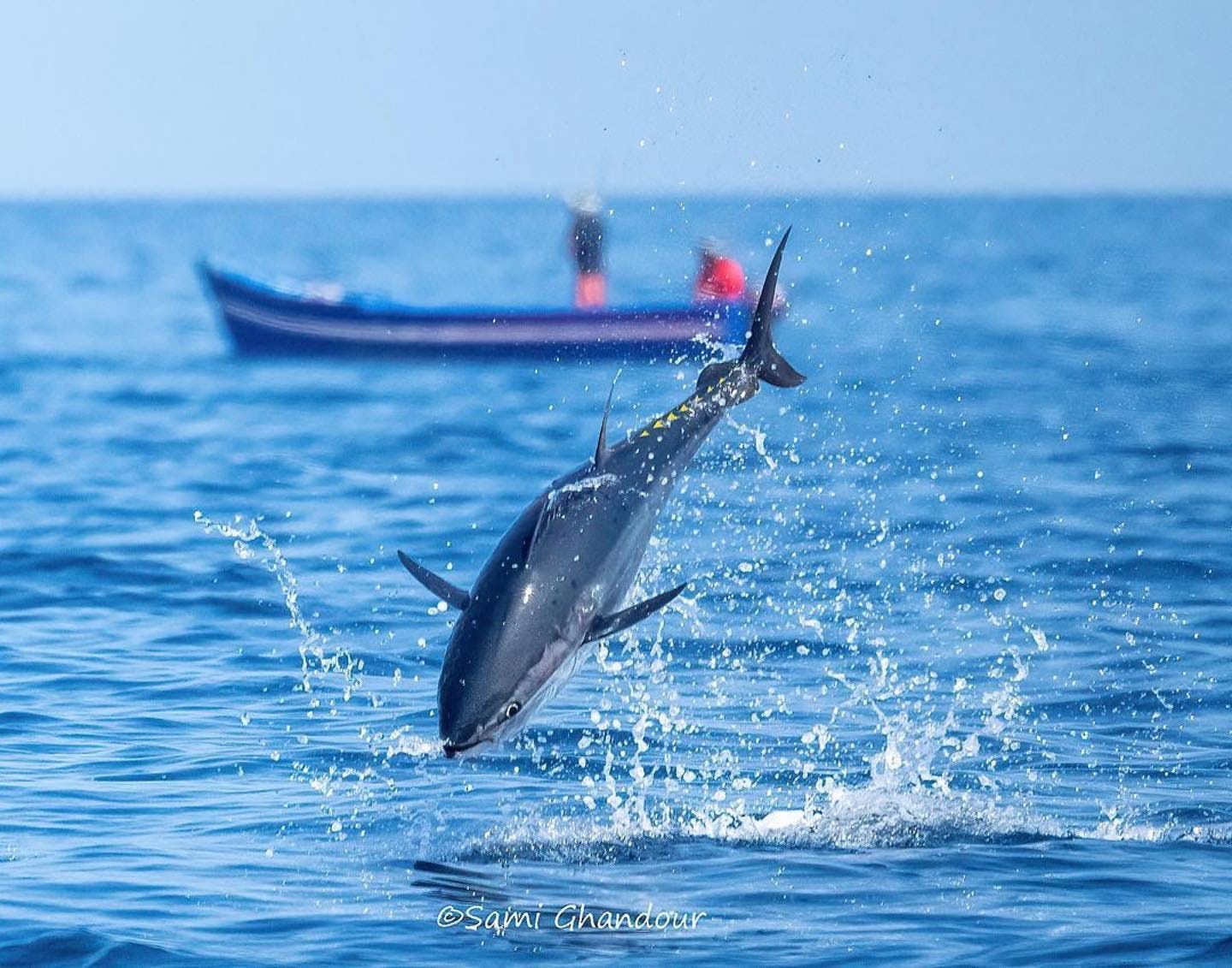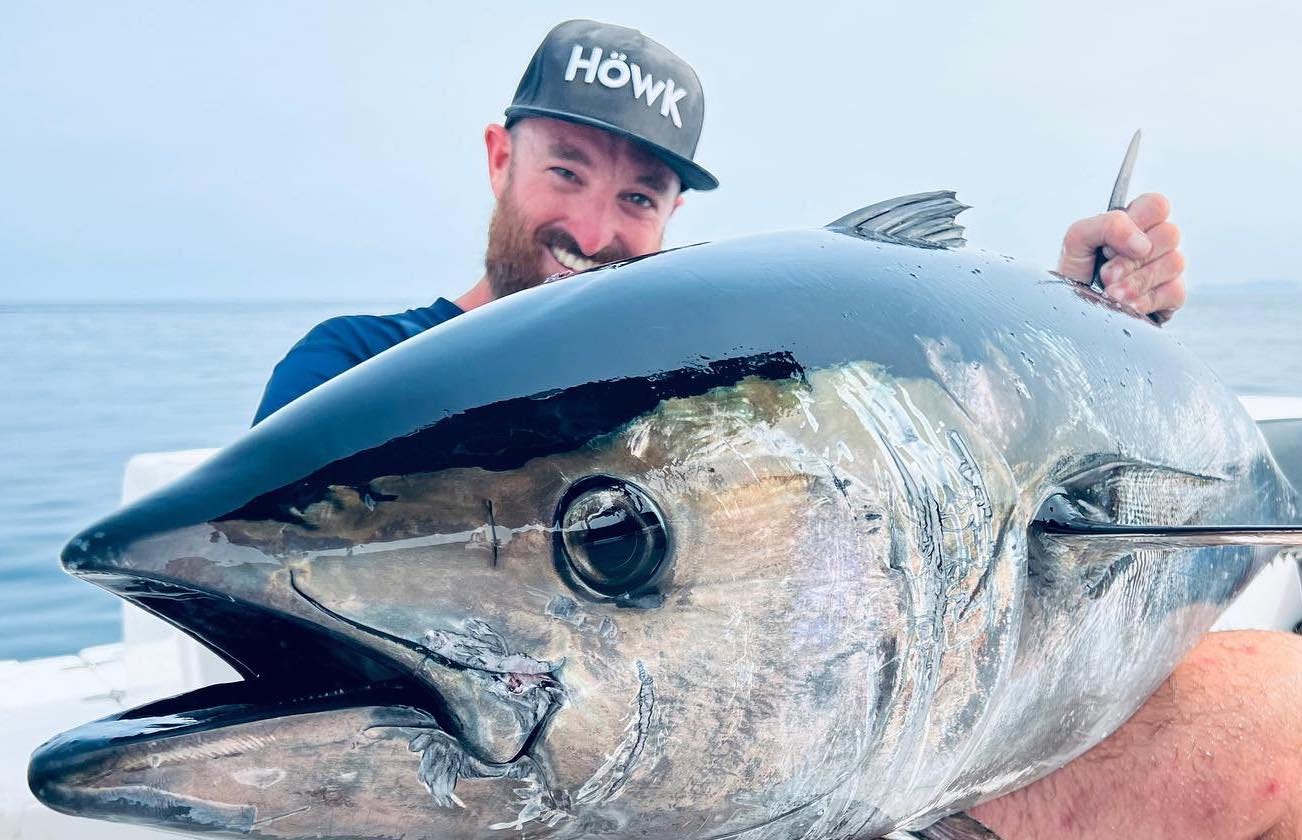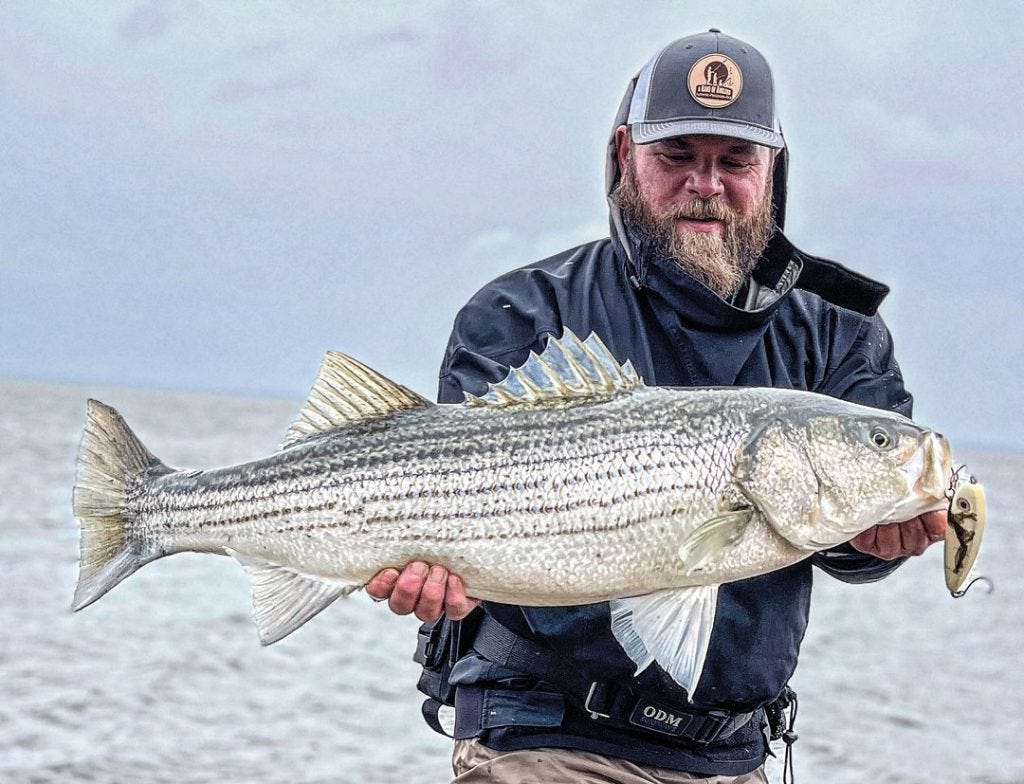The maritime law of salvage has its origins in Roman law, which dictated that one who preserved or improved upon the misplaced property of another was owed compensation, even if the service was not requested. Let’s get out the inter-webs seiner and get to work…
Podcast of the Week: SeaBros Podcast - “Follow Your Passion” with Seth Funt —> Seth really gets to the crux of what makes good fishermen great…passion, effort, and boundless curiosity. He’s a prepper, tinkerer, and knows a few things about killing Swords. His mantra is that 20% extra prep per trip pays serious dividends over a season, usually equating to 2 or 3 truly incredible days. He dives into new Canyons tactics to try, the ingredients necessary for Swordfish success, and techniques for hooking multiples when jigging, on the troll, or kite-fishing down South.
Fishing Reports: OnTheWater / Fisherman Mag / SaltyCape / HullTruth / 360Tuna
“Fear causes hesitation, and hesitation will cause your worst fears to come true.” - Bohdi, ‘Point Break’
International Knowledge: If I were to (hypothetically) assemble an international band of bank-robbing, tuna-popping, extreme sports junkies and “vaya con dios”, a villain lair set into the cliffside of Balyounech would be priority one. Not only would lax the financial oversight and non-US extradition laws of Morocco provide a degree of safety to my criminal enterprise, having some of the world’s finest Bluefin fishing in the backyard wouldn’t hurt.
That said, it would never be about the money…we would stand for something. We would be a symbol to those people inching their way along the freeways in their metal coffins that the human spirit is still alive. We would live by the tide cycle, riding wooden Pangas into the sunrise every morning, our lives set to the soundtrack of screaming Stellas and sun-baked two-strokes.
A man can dream. The next best thing would be to track down James Triay. Fishing the Strait of Gibraltar has been a way of life in his family for generations. Son to the owner of tackle shop, he began his Bluefin journey some 15-years ago in the shadows of Mediterranean cliffside fishing villages. Here is his story…
Q - I tend to think of Cape Cod as a historic fishery, but there's evidence of tuna fishing off Gibraltar dating back to the Roman Empire. What makes this geographic marvel so special, in your own words?
A - The strait of Gibraltar is a tuna highway formed where the Atlantic funnels into the Mediterranean. Extreme currents and tides are the norm, with Giant Bluefin Tuna riding through the Strait on their migratory path towards the Adriatic. For several months every year, this journey gives us the chance to chase the stampede in and out of the Med, the target zone spanning at least three countries and two continents.
The legend goes that there was (and still is perhaps) a cave painting in Zahara de los Atunes which depicts a Bluefin Tuna. When the sunlight from a small gap near the cave entrance landed on the painting, the hunter gatherer people of the area knew that the tuna migration season had begun. The Phoenicians and Romans developed a method of trapping and catching the tuna called the ‘Almadraba’, a system that is still used to this day.
Q - Both of our fisheries share a stock of BFT that spawn in the Mediterranean and traverse the Atlantic in the Summer months. What does the Mediterranean migration look like? What's the main tuna forage? And what tactics do you employ to target tuna in your waters?
A - In February and March, if you know where to look, you can see the first schools arrive in the Med. All year-classes are interspersed, but they’ve only got one thing on their minds: procreate. After the mission of breeding is complete however, the feeding commences, and the warm Summer waters offer ample bait for them to dine on. This is when trolling and live-baiting is best, using live Mackerel or large trolling plugs. Into late-Summer and Autumn, the arrival for Flying Fish trigger an even more aggressive and acrobatic feeding response. This dictates light-tackle topwater tactics, and September is one of the best months to get locked up on a fish of a lifetime.
Q - Looking at the bathymetry of the Strait, the extreme depth and sharp contours are quite different from the East Coast of the US. How does this make tuna fishing uniquely challenging in your waters? How do the winds and currents set up?
A - The Straits form a deep channel where depths up to 1000 meters can be reached not far from shore. Its rugged seafloor and coastline add to its organic ferocity, rip-tides and temperamental currents making navigation not for the faint-hearted. Fishing in the Straits is pure rock & roll. Two dominant winds (easterly or westerly) always stack a healthy chop and add to higher coefficient tides too. Tuna utilize these conditions to their advantage, leaving anglers no choice but to grit teeth, and rise to the occasion. Deep waters and stronger currents work in favor of the fish, that's for certain, so perhaps you (on the East Coast of the US) are lucky to have such great shallow water fisheries.
Q - One of my favorite videos of yours is "Jurassic Park Bluefin". What was one of your favorite 'Jurassic Park' moments from your 2022 season?
A - 2022 was a very good year for me with approximately 42 Giant BFTs landed (many of them released) and over 40 fish caught on topwater and spinning gear. The highlight of it all was on the Moroccan side of the Straits, fishing with long time friend Sami Ghandour. It meant a lot for us to be chasing some BFT together and having an absolute blast, which I’m sure you can see from his amazing photos (@sam_ghandour).
2023-24 Proposed Restricted-Fishing Days in the Atlantic Bluefin Tuna Fishery (NOAA) - NOAA Fisheries would establish RFDs every Tuesday, Friday, and Saturday from July 1 through November 30, 2023 and every Tuesday and Friday from December 1, 2023 to March 31, 2024 while the fishery is open. —> Same as last year…
Economic Contributions of Recreational Fishing by U.S. States (FishingTackleRetailer) - “The American Sportfishing Association (ASA) released the 2023 Economic Contributions of Recreational Fishing: U.S. Congressional Districts report, an update of previous data collected. America’s 52.4 million anglers contribute $148 billion in economic output and support 945,500 jobs across the entire country, while also contributing $1.8 billion towards conservation. While jobs supported include the manufacturing and sales of fishing equipment and gear, recreational fishing also supports jobs in additional industries, such as hotel lodging, restaurants, charter boat trips and more."
Glidebaits for Striped Bass (OnTheWater’s Jimmy Fee) - “From a surfcasting perspective, the lure most likely to draw comparisons to the glidebait is the darter because both lures swim in a fluid S-pattern on a straight retrieve. For my money, glidebaits are more versatile. While darters need more resistance to get moving, glidebaits swim well when fished down-current, as well as across and against it. Most glidebaits sink, which gives you more control over where they are in the water column. When you sweep the rod quickly in the middle of the retrieve, the lure’s action goes from a lazy S-turn to a tight, vibrating wobble. That abrupt change in action, like a baitfish learning it’s being pursued, has triggered many shoulder-dislocating strikes for me. Fishermen have found success with glidebaits in back bays, sandy beaches, boulder fields, and the Cape Cod Canal. They are available in sizes than can imitate everything from peanut bunker to full-size menhaden.” —> Massive silhouette, check. A wide-ranging action with open-water drawing power, check. Visual strikes and the ability to speed up or stop the presentation on a dime, check check. Glide baits have been producing trophy-caliber freshwater bass catches for a decade, so there’s no reason it won’t translate to their Saltwater brethren. The slow rates of fall and stall after a pause on a quick rotation of the reel handle is something any gamefish will find hard to resist. The only negatives are a not-so-silent entry, which can be offset with super-long casts ahead of the target area, and a lower-than-average hookup ratio. The solution to the latter is a delayed and low-angle sweeping hookset in the opposite direction of the fish’s travel (easier said than done in the heat of the moment). As long as Jimmy Fee doesn’t buy up the entire Northeast stock of G-Ratts and S-Wavers before I can get my hands on one, I’ll be adding these to my arsenal once the Herring and Bunker-eaters show up on the June Moon. I might even take a look at a few Musky-rated hunks of plastic to see how they hold up to schoolie BFT come July.
Are Slot Limits Improving Striped Bass Numbers in the Northeast? (SaltwaterSportsman) - “After nearly a decade of declining striped bass availability along the coast, this past fall was reminiscent of the glory days. But has there been a definitive increase in striped bass abundance? Is this going to be the new normal? I think it’s too early to make that assumption. There are likely a few things in play here, and thus a few assumptions we can make. Without getting too techie, though, the fish that are falling into the slot size right now are likely one of the strong Chesapeake Bay year classes (2011 and 2015) recruiting into the fishery. And those 30s to 50s? Likely other good year classes—2001 and 2003.
But really, the slot limit’s general effect seems to be that it has worked to reduce fishing mortality overall. It sure does seem like we’re killing fewer fish. According to the stock-assessment update, fishing mortality is down quite a bit from where it was before the slot limit was put into effect. And the stock-assessment update was clear in its assumption that we’re no longer overfishing. This has been clear on the water. It’s just harder to catch a slot fish than it is to simply catch a fish over 28 inches, particularly with all those larger fish around.”
Thanks for reading The Weekly Salvage, until next week!
Have feedback or want to learn more?
Reach out to us on IG @Blowin_We_Goin











Really interesting, I really liked the post.